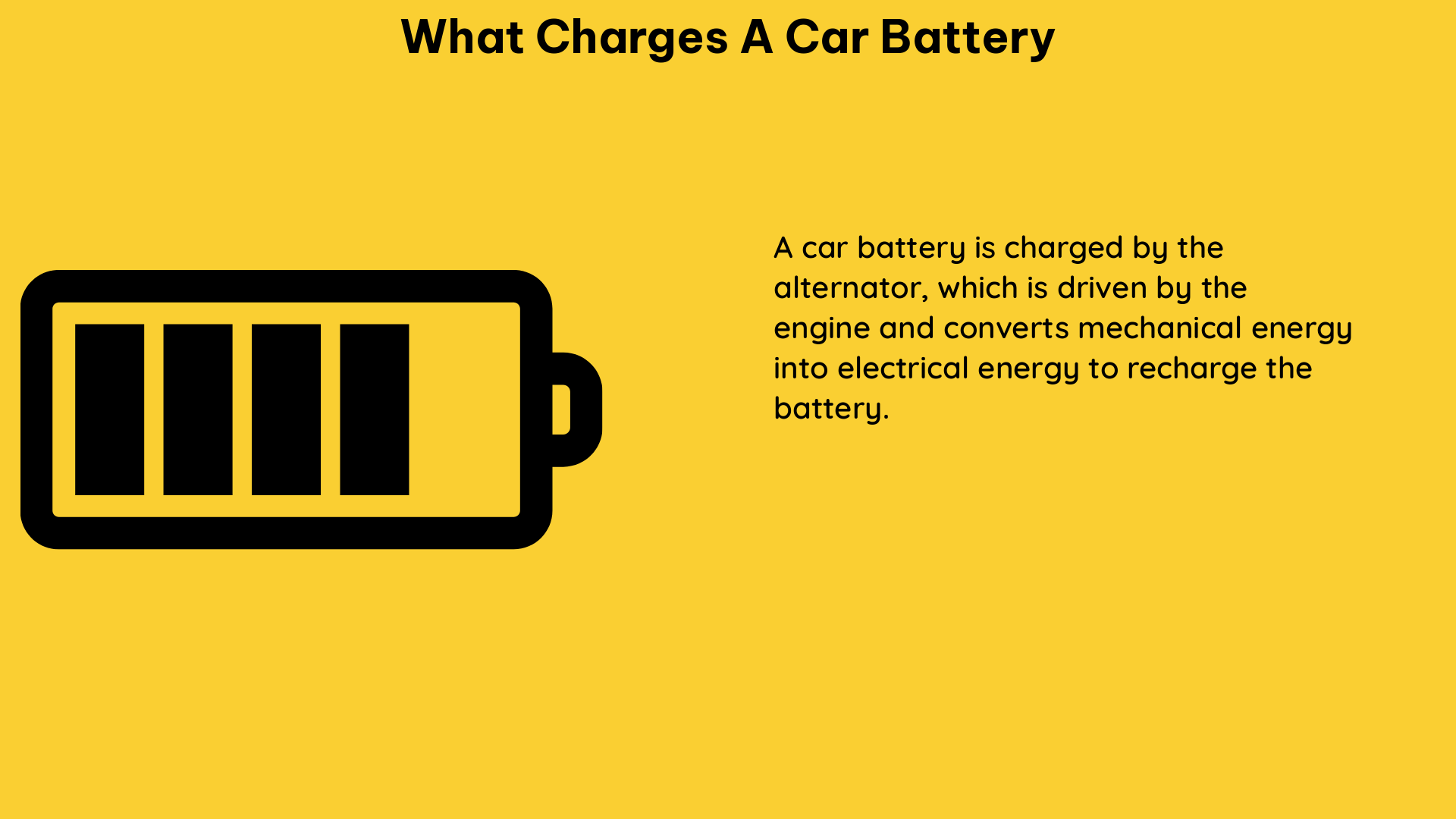Charging a car battery is a crucial aspect of vehicle maintenance, ensuring reliable performance and prolonging the battery’s lifespan. To understand what charges a car battery, we need to delve into the technical specifications and quantifiable data related to battery charging, including state-of-charge (SoC), state-of-health (SoH), watt-hours, energy density, specific energy, impedance, and commercial viability.
State-of-Charge (SoC) and State-of-Health (SoH)
The state-of-charge (SoC) refers to the remaining electricity available in the car battery cell, expressed as a percentage. The state-of-health (SoH) describes the difference between the battery being studied and a fresh battery, considering cell aging. The SoH is also expressed as a percentage of the maximum charge available compared to the rated capacity.
To measure SoC and SoH, various techniques can be employed:
- Galvanostatic Cycling with Potential Limitation (GCPL): This method involves applying a constant current to the battery while monitoring the voltage, allowing for the determination of the battery’s capacity and state of charge.
- Chronopotentiometry (CP): This technique measures the voltage response of the battery under a constant current, providing insights into the battery’s state of charge and state of health.
- Constant Current (CC): This simple method involves charging the battery at a constant current until it reaches a specific voltage, which can be used to estimate the battery’s state of charge.
The discharge profile of a secondary battery is directly affected by its state of health, with lower SoH leading to faster battery discharge.
Watt-hours, Energy Density, and Specific Energy

Watt-hours (Wh) measure the amount of energy a battery can deliver in an hour, and this is the standard unit of measurement for batteries. When dealing with large amounts of energy, capacity is often expressed in kilowatt-hours (kWh) or gigawatt-hours (GWh).
Energy density is the amount of energy a battery contains relative to its size, typically measured in watt-hours per liter (Wh/L). Specific energy, on the other hand, is the amount of energy a battery contains relative to its weight, measured in watt-hours per kilogram (Wh/kg).
These metrics are crucial for battery performance, as they determine the battery’s capacity, energy efficiency, and overall effectiveness in various applications. For example, a car battery with a higher energy density and specific energy would be able to store more energy in a smaller and lighter package, improving the vehicle’s range and efficiency.
Impedance
Impedance is the amount of resistance within a car battery cell when stimulated by an electrical current. Elevated levels of impedance indicate a weakness within the battery, which can lead to stored energy being converted to heat rather than a useful current when the battery is used.
Impedance testing is essential for evaluating the condition of the car battery and identifying early signs of failure or cell deterioration. By monitoring the battery’s impedance, you can detect issues before they become more severe and take appropriate action to maintain the battery’s performance.
Commercial Viability
Commercial viability is not a technical metric but an essential factor in determining the practicality and market readiness of a battery technology. For a car battery to be commercially viable, it must meet or exceed the market standards for cost, size, mass, performance, and safety, while also being in mass production or readily capable of such.
Transparency into the balanced performance, cost, safety, and producibility of a car battery technology is crucial for partners, investors, and consumers, as it directly impacts the technology’s ability to work in the real-world beyond the laboratory.
By understanding these technical specifications and quantifiable data related to car battery charging, you can optimize the performance, longevity, and overall efficiency of your vehicle’s battery. This knowledge will help you ensure your car battery is properly charged, maintained, and ready for use, providing a reliable and efficient power source for your vehicle.
References
- What are SOC and SOH of a battery, how to measure them? – BioLogic. (2023, October 6). Retrieved from https://www.biologic.net/topics/battery-states-state-of-charge-soc-state-of-health-soh/
- 8 battery metrics that really matter to performance | Sila. (2022, March 30). Retrieved from https://www.silanano.com/insights/8-battery-metrics-that-really-matter-to-performance
- Extreme Fast Charge Batteries | Transportation and Mobility Research. (n.d.). Retrieved from https://www.nrel.gov/transportation/extreme-fast-charge-batteries.html

The lambdageeks.com Core SME Team is a group of experienced subject matter experts from diverse scientific and technical fields including Physics, Chemistry, Technology,Electronics & Electrical Engineering, Automotive, Mechanical Engineering. Our team collaborates to create high-quality, well-researched articles on a wide range of science and technology topics for the lambdageeks.com website.
All Our Senior SME are having more than 7 Years of experience in the respective fields . They are either Working Industry Professionals or assocaited With different Universities. Refer Our Authors Page to get to know About our Core SMEs.